Description
Familiarity with treatment
Chin augmentation using injectable fillers is a non-surgical procedure that can enhance the size, shape, and projection of the chin. Here is a general overview of the procedure based on the search results:
Consultation: The first step is to schedule a consultation with a qualified medical professional, such as a board-certified cosmetic surgeon or dermatologist, who specializes in injectable fillers. During the consultation, you will discuss your goals, concerns, and expectations for chin augmentation.
Evaluation and Planning: The medical professional will evaluate your chin and facial structure to determine the most suitable approach for your desired outcome. They will consider factors such as chin deficiency, asymmetry, and overall facial balance. Based on this evaluation, a personalized treatment plan will be developed.
Injection Technique: The procedure is typically performed in an office or clinic setting. Before the injections, the skin will be cleaned, and a numbing cream may be applied to improve comfort. The chosen filler, such as hyaluronic acid or calcium hydroxyapatite, will then be injected into specific areas of the chin to achieve the desired shape and projection.
Volume and Technique: The volume of filler used and the injection technique will depend on the individual’s needs and desired outcome. The medical professional will strategically place the filler to enhance the chin’s length, projection, and contours. The injection technique may involve deep subcutaneous injections, fanning techniques, or superficial subcutaneous injections, depending on the specific goals.
Recovery and Results: The recovery period for chin augmentation with injectable fillers is typically minimal. Some swelling, bruising, redness, or tenderness at the injection site may occur, but these side effects are usually temporary. The results of the procedure are immediate, and you can expect to see improved chin shape and projection. The duration of the results can vary depending on the type of filler used, ranging from several months to a year.
Who is it suitable for?
Chin augmentation with injectable fillers is suitable for various individuals seeking to enhance the appearance of their chin. Here are some factors that make it a suitable option, based on the search results:
Strengthening and Defining the Chin: Injectable fillers can be used to strengthen and define the chin, addressing concerns such as a weak or recessed chin 1.
Increasing Chin Projection: Fillers can help increase the projection of the chin, providing a more balanced and proportionate facial profile 1.
Improving Facial Symmetry: Injectable fillers can be used to improve facial symmetry by addressing asymmetry in the chin area.
Adding Proportion to the Bottom of the Face: Chin augmentation with fillers can add proportion to the lower face, creating a more harmonious appearance 1.
Contouring the Jawline: Fillers can be strategically placed to contour the jawline, enhancing its definition and shape.
Softening Cleft Chin: Injectable fillers can also be used to soften the appearance of a cleft chin, providing a smoother and more balanced chin contour 1.
Who is it not suitable for?
While chin augmentation with injectable fillers can be a suitable option for many individuals, there are certain cases where it may not be recommended. Here are some factors that may make chin augmentation with injectable fillers not suitable, based on the search results:
Severe Chin Deficiency: If you have a severe chin deficiency or significant structural issues with your chin, injectable fillers may not provide sufficient correction. In such cases, a surgical procedure like sliding genioplasty or chin implant may be more appropriate.
Excessive Skin laxity: If you have excessive skin laxity or sagging in the chin area, injectable fillers may not effectively address the concern. In these cases, a surgical procedure like a facelift or neck lift may be more suitable to achieve the desired results.
Desire for Permanent Results: Injectable fillers provide temporary results, typically lasting several months to a year. If you are seeking permanent results, a surgical procedure like sliding genioplasty or chin implant may be a better option.
Active Infections or Skin Conditions: If you have active infections or skin conditions, such as acne or cold sores, in the chin area, it may not be suitable to undergo chin augmentation with injectable fillers until the condition is resolved.
Unrealistic Expectations: If you have unrealistic expectations or are seeking dramatic changes that cannot be achieved with injectable fillers alone, your medical professional may recommend alternative procedures or a combination of treatments to achieve your desired outcome.
Advantages
Chin augmentation with injectable fillers offers several advantages, as mentioned in the search results:
Non-Surgical Approach: Chin augmentation with injectable fillers is a non-surgical procedure, which means it does not require incisions or extensive downtime. This can be appealing to individuals who prefer a less invasive option compared to surgical procedures like genioplasty or chin implants.
Affordability: Injectable fillers for chin augmentation are generally more affordable compared to surgical options. This can make it a more accessible choice for individuals who are looking to enhance their chin without the higher costs associated with surgery.
Minimal Downtime: The recovery period for chin augmentation with injectable fillers is typically minimal. While some temporary side effects like swelling and bruising may occur, they usually resolve within a few days. This allows individuals to resume their normal activities relatively quickly 1.
Reduced Pain and Discomfort: Compared to surgical procedures, chin augmentation with injectable fillers generally involves less pain and discomfort. Numbing creams or local anesthesia may be used to minimize any discomfort during the procedure.
Personalization and Customization: Injectable fillers offer flexibility in terms of customization. The choice of filler type, injection technique, and combination of gel hardness can be tailored to the individual’s specific needs and desired outcome. This allows for a personalized approach to chin augmentation 2.
Temporary Results: Injectable fillers provide temporary results, which can be advantageous for individuals who want to try out chin augmentation before committing to a permanent solution. The temporary nature of fillers also allows for adjustments or modifications to be made in subsequent treatments.
Complications
Chin augmentation with injectable fillers is generally considered safe, but like any medical procedure, it carries some potential complications and risks. Here are some complications that may occur, as mentioned in the search results:
Swelling, Bruising, and Redness: Swelling, bruising, and redness are common side effects after chin augmentation with injectable fillers. These usually resolve within a few days, but in some cases, they may persist for longer.
Pain and Discomfort: Some individuals may experience pain or discomfort at the injection site. This is typically mild and temporary, but if it persists or worsens, it’s important to consult with your medical professional.
Infection: While rare, there is a risk of infection with any injectable procedure. It’s crucial to follow proper aftercare instructions, keep the injection site clean, and report any signs of infection, such as increased redness, swelling, or pus, to your medical professional.
Allergic Reactions: Allergic reactions to injectable fillers are possible, although they are uncommon. It’s important to inform your medical professional about any known allergies or previous adverse reactions to fillers or other substances.
Nodules or Granulomas: In some cases, small nodules or granulomas may form at the injection site. These are typically benign and can be treated by your medical professional if necessary.
Vascular Complications: While rare, there is a risk of vascular complications, such as vascular occlusion or compromise, which can affect blood supply to the surrounding tissues. Prompt recognition and management of such complications are crucial to minimize potential adverse effects.
Contour Irregularities: In some cases, contour irregularities may occur, especially if the filler is not evenly distributed or placed incorrectly. This can result in an asymmetrical or unnatural appearance.
preoperative care
Preoperative care for chin augmentation with injectable fillers involves several important considerations. While the specific preoperative instructions may vary depending on the medical professional and individual circumstances, here are some general aspects to be aware of, based on the search results:
Consultation: Schedule a consultation with a qualified medical professional who specializes in injectable fillers for chin augmentation. During the consultation, discuss your goals, concerns, medical history, and any allergies or previous adverse reactions to fillers or other substances.
Medical Evaluation: The medical professional will evaluate your overall health and assess your suitability for the procedure. They may inquire about any underlying medical conditions, medications you are taking, or previous cosmetic procedures you have undergone.
Discussion of Expectations: It’s important to have a thorough discussion with your medical professional about your desired outcome and expectations. They will provide you with information about the potential results, limitations, and risks associated with chin augmentation using injectable fillers.
Preparation Instructions: Your medical professional may provide specific instructions to prepare for the procedure. This may include avoiding certain medications or supplements that can increase the risk of bleeding, such as aspirin or nonsteroidal anti-inflammatory drugs (NSAIDs). They may also advise you to discontinue smoking, as it can affect the healing process.
Postoperative care
Postoperative care following chin augmentation with injectable fillers is crucial for optimal healing and results. While specific instructions may vary depending on the medical professional and individual circumstances, here are some general aspects to consider, based on the search results:
Follow Aftercare Instructions: It’s important to carefully follow the postoperative instructions provided by your medical professional. These instructions may include guidelines for cleaning the treated area, avoiding certain activities, and taking any prescribed medications.
Manage Discomfort: Some individuals may experience mild discomfort or soreness after the procedure. Your medical professional may recommend over-the-counter pain relievers or prescribe medication to manage any discomfort. Applying ice packs to the treated area can also help reduce swelling and discomfort.
Avoid Touching or Applying Pressure: It’s important to avoid touching or applying pressure to the treated area immediately after the procedure. This helps ensure that the filler settles properly and reduces the risk of complications.
Protect from Sun Exposure: Protect the treated area from excessive sun exposure by wearing a wide-brimmed hat and using sunscreen with a high SPF. Sun exposure can potentially darken scars and affect the healing process.
Avoid Strenuous Activities: Engaging in strenuous activities or exercises that may increase blood flow to the treated area should be avoided for a certain period as advised by your medical professional. This helps minimize the risk of swelling, bruising, or complications.
Attend Follow-up Appointments: It’s important to attend any scheduled follow-up appointments with your medical professional. These appointments allow them to assess your healing progress, address any concerns, and make any necessary adjustments.
Be Mindful of Results: Understand that the results of chin augmentation with injectable fillers may take some time to fully settle. It’s important to have realistic expectations and give your body time to adjust to the changes.
Report Any Concerns: If you experience any unusual or concerning symptoms, such as excessive swelling, severe pain, or signs of infection, contact your medical professional immediately.

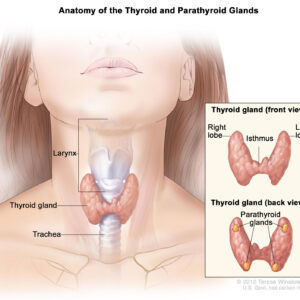
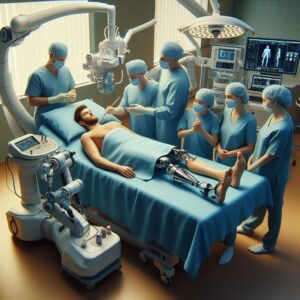
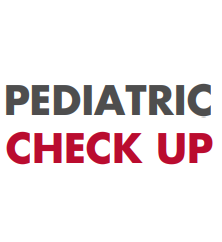
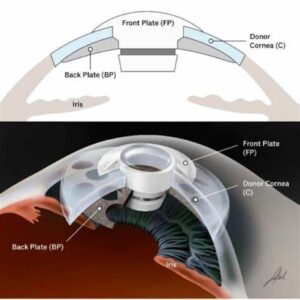
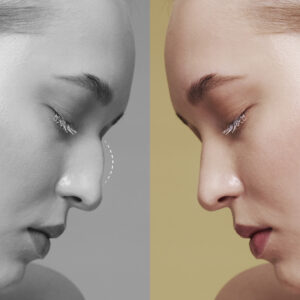
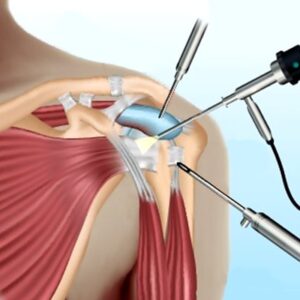
Reviews
There are no reviews yet.